Do you grind up your venison shanks? Feed them to the dog? Wonder what could ever make them taste good? After you try my smoked venison shanks recipe it might become your new favorite way to cook this underused cut of game meat.
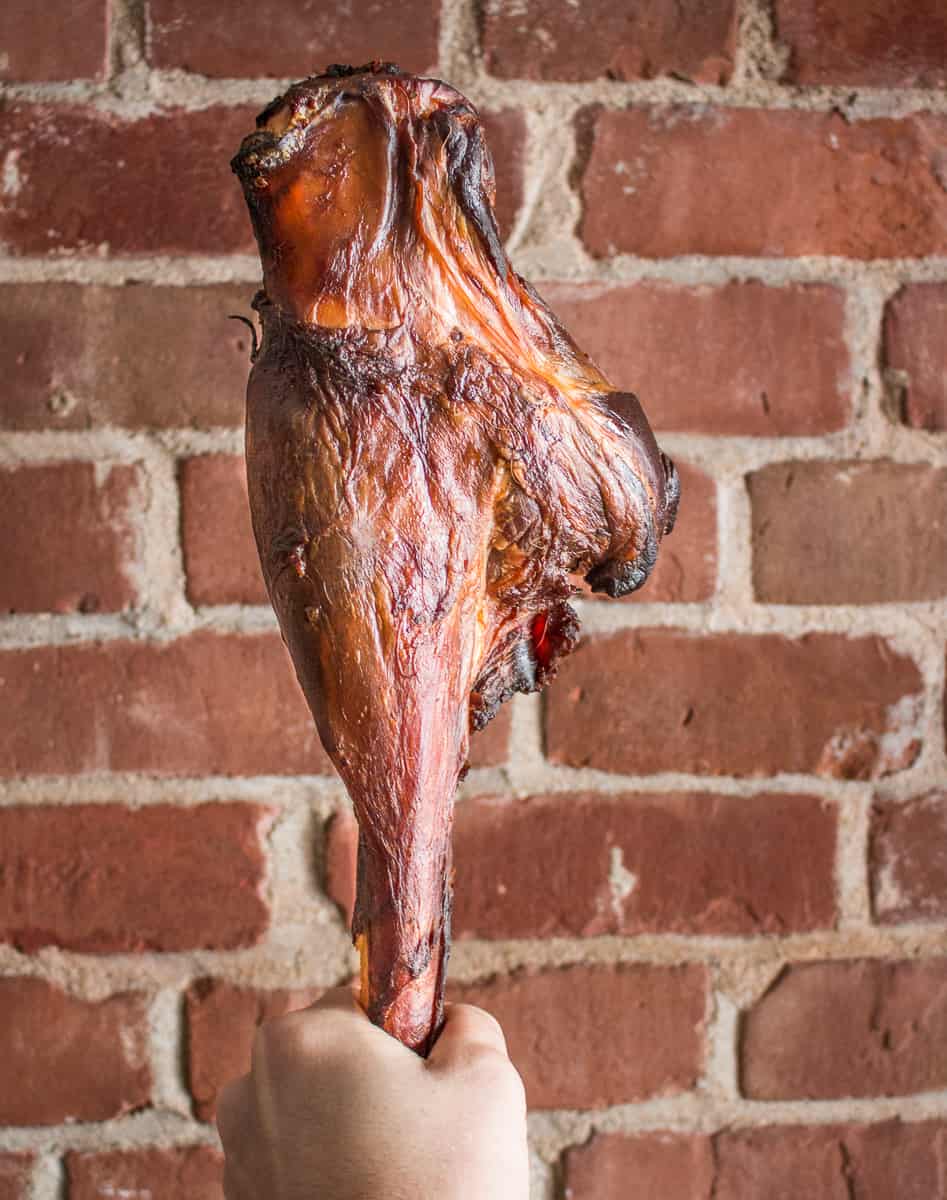
Cure, Smoke, and Freeze for later
The basic idea is this: right after I butcher an animal, I'll take different parts that benefit from slow cooking like shanks, chunks of shoulder, or bones, and season them with salt for "un-cured" shanks or toss them in a plastic bucket filled with ham brine outside—I'm in Minnesota and Wisconsin, so our falls our very cool and it's very safe.
The version that's pictured in this post is a cured version that you can cook like a ham bone. After curing in a brine with sugar, spices and sodium nitrate (pink salt), the shanks go in the smoker for a couple hours to par cook them, then I vacuum seal and freeze. When I want smoked shanks to cook with, all I have to do is take them out of the freezer, just like a smoked ham hock, but venison.
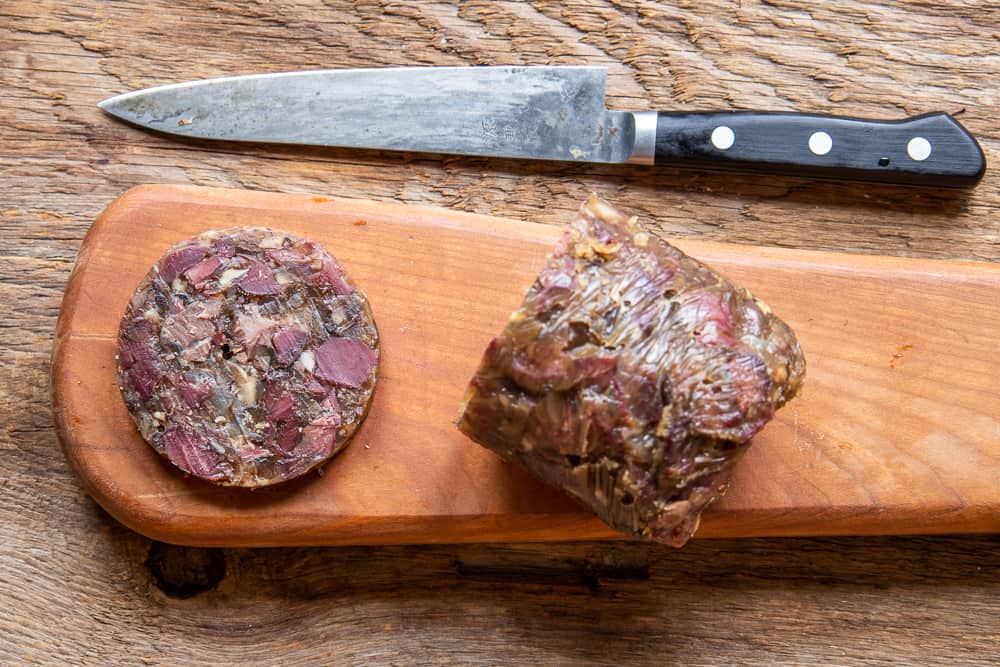
Shanks can be tender, and delicious
Some of you might be thinking: "Sure Alan, you eat all the boot-leather tough deer meat you want--but it's not for me". Trust me here, after a cure, smoke, and a slow braise, you won't recognize the end product. The cure is the really special part.
The sugar and salts in the cure denature the meat in a way, the same way it does ham and corned beef, turning it from boot leather tough, to delicious, rich, gelatinous gold.
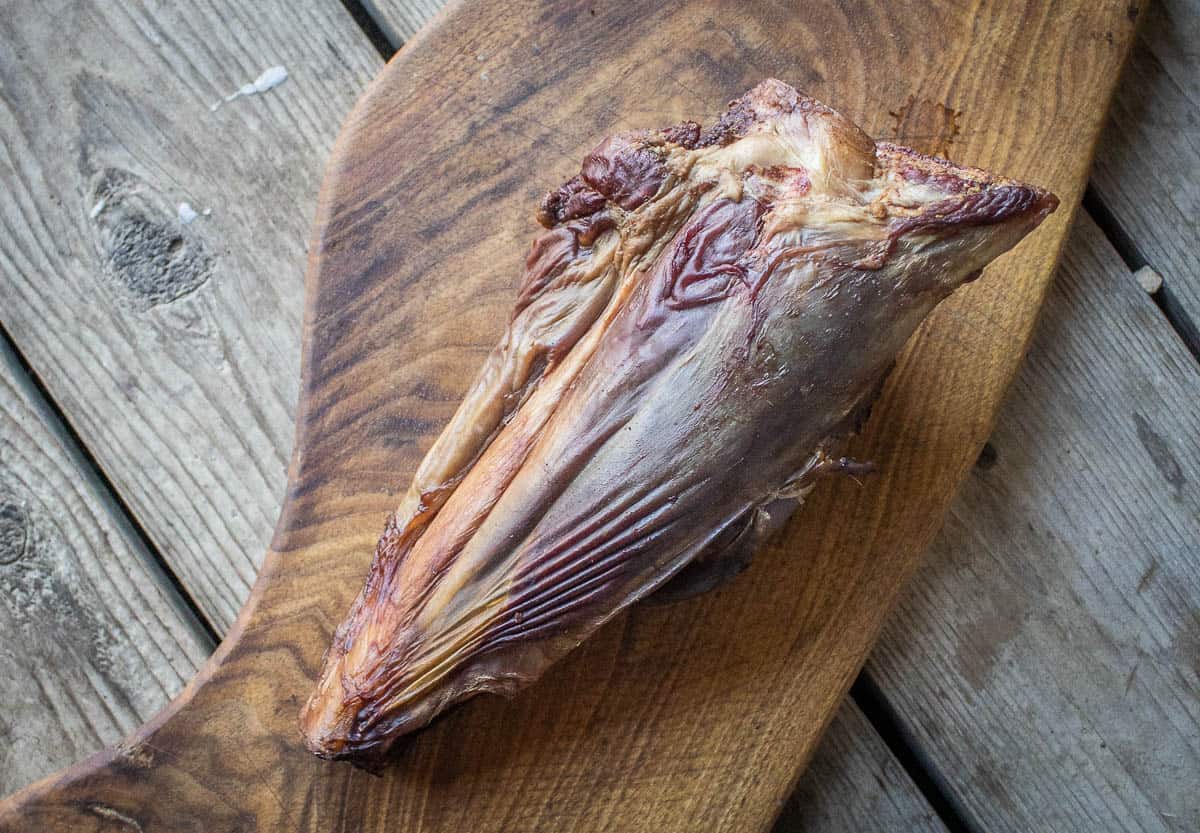
There will be a little picking apart and removing of tendons, etc, after it's braised and cooked, but no more than something like a chuck roast. Also, know that I'm not going to eat the whole shank here glazed like a Renaissance festival turkey leg--it's for cooking wet, in broth, soup, stew, etc, and afterwords I'm always going to be dicing or slicing it up.
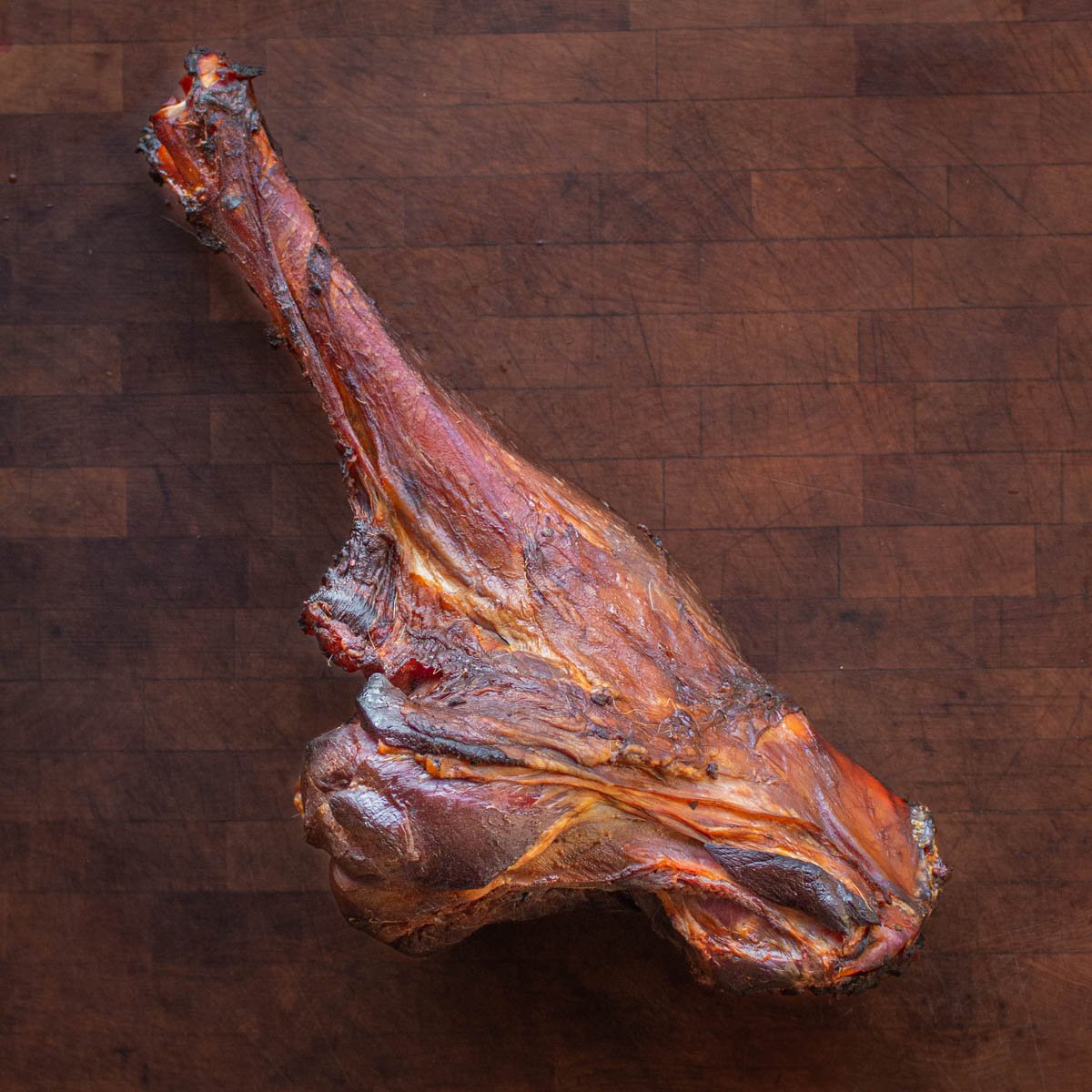
It may sound like extra work, during butchery time, and it is, but it's easier doing large amounts of stuff like that in batches than one at a time, and it saves me from having to fire up the smoker in the winter.
Whenever I want a big bowl of smokey broth, a pot of beans, or whatever else, all I have to do is reach in the freezer and pull out one of my smoked golden nuggets. If you want to see an example of how I use the shanks specifically, see my smoked venison shank ramen.
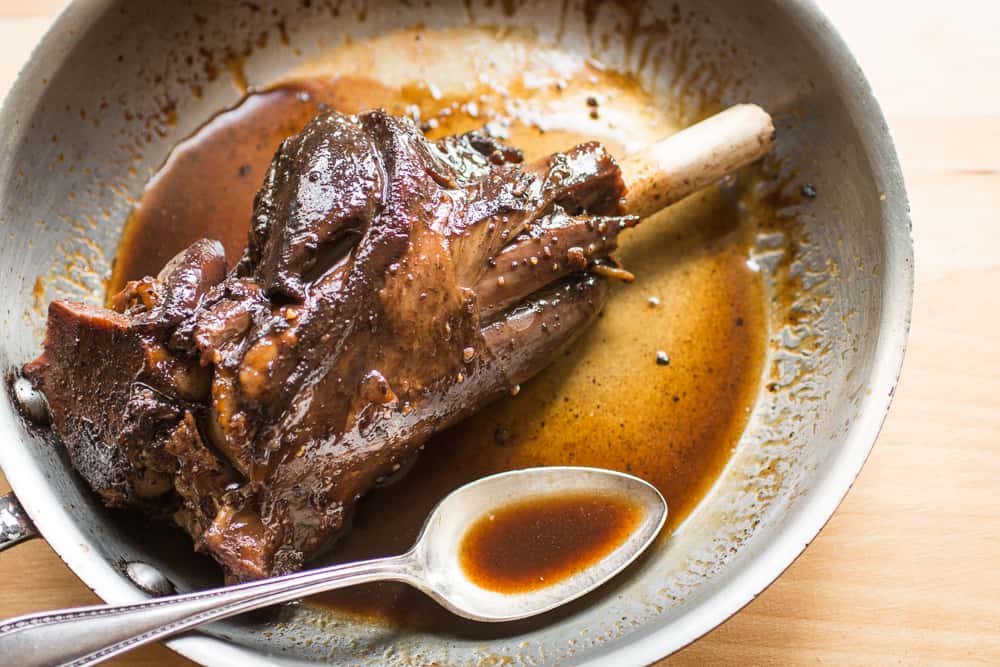
Two ways to smoke, endless possibilities
Cured
Cured shanks are made by immersing cut shanks in a brine, or rubbing with a cure like you would bacon. Both dry and wet methods will take at least five days of soaking/curing for the cure to penetrate.
Shanks cooked like this will have a texture after cooking similar to ham and corned beef, and they're great used to flavor a pot of bean soup, cabbage, or cut into pieces and used anywhere ham or corned beef would be welcome.
Uncured
If you want to eat a whole shank, this is what you want. Uncured is what I call shanks smoked without using prague powder (sodium nitrate) and sugar. An uncured shank can be dry or wet brined, and involves nothing more than brining a shank by immersing it in salt brine (wet) or seasoning heavily with salt (dry) and allowing it to rest for a few hours before cooking.
When I cook shanks like this, since they're not as highly seasoned and "hammy" like the other, more heavily cured shanks, they're better for serving whole as an entree like smoked osso bucco, or a simple braised venison shank.
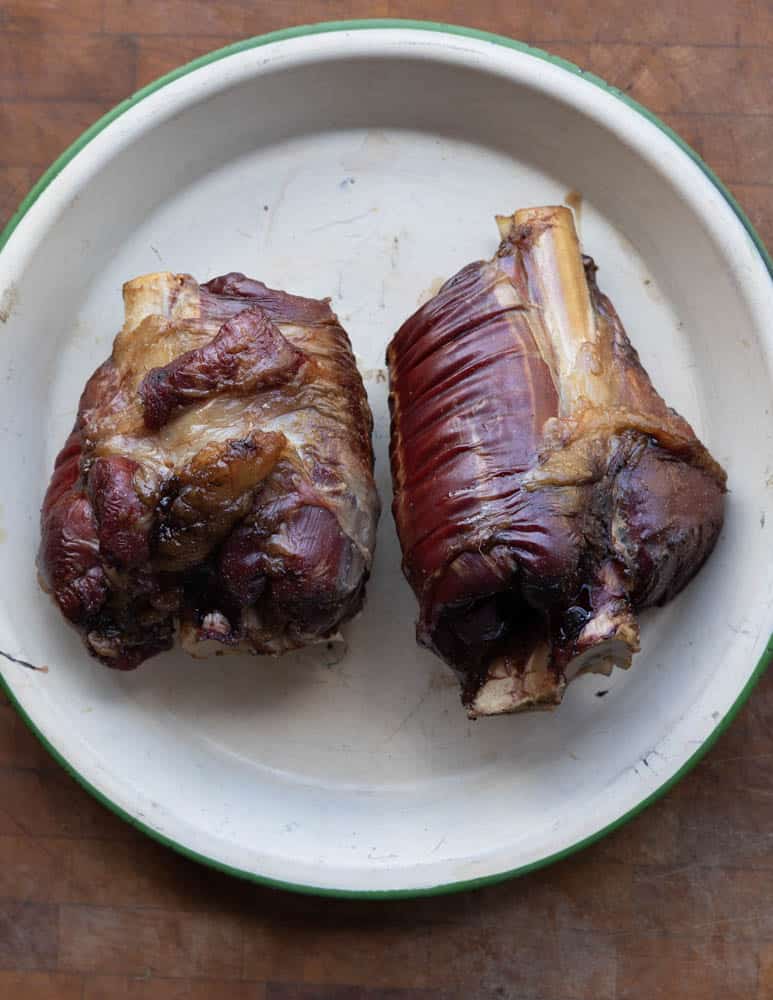
Cutting shanks into manageable sizes
No doubt about it, femurs are tough bones, and they're long, making it difficult to fit them into freezer bags, crock pots, or baking dishes. for easier storage, cut your shanks with a reciprocating saw (Sawsall) while you're butchering. The cut femur bones are great seasoned and smoked along with the shanks. Afterword you can add them to stocks and soups. Can you say smoked venison shank bone-ham and bean soup? I can.
One-handed cordless saw
My favorite reciprocating saw for butchery is this small, cordless, one-handed model.
Un-painted meat blades
You'll also want special, un-painted meat blades for cutting bones.
Removing the fascia
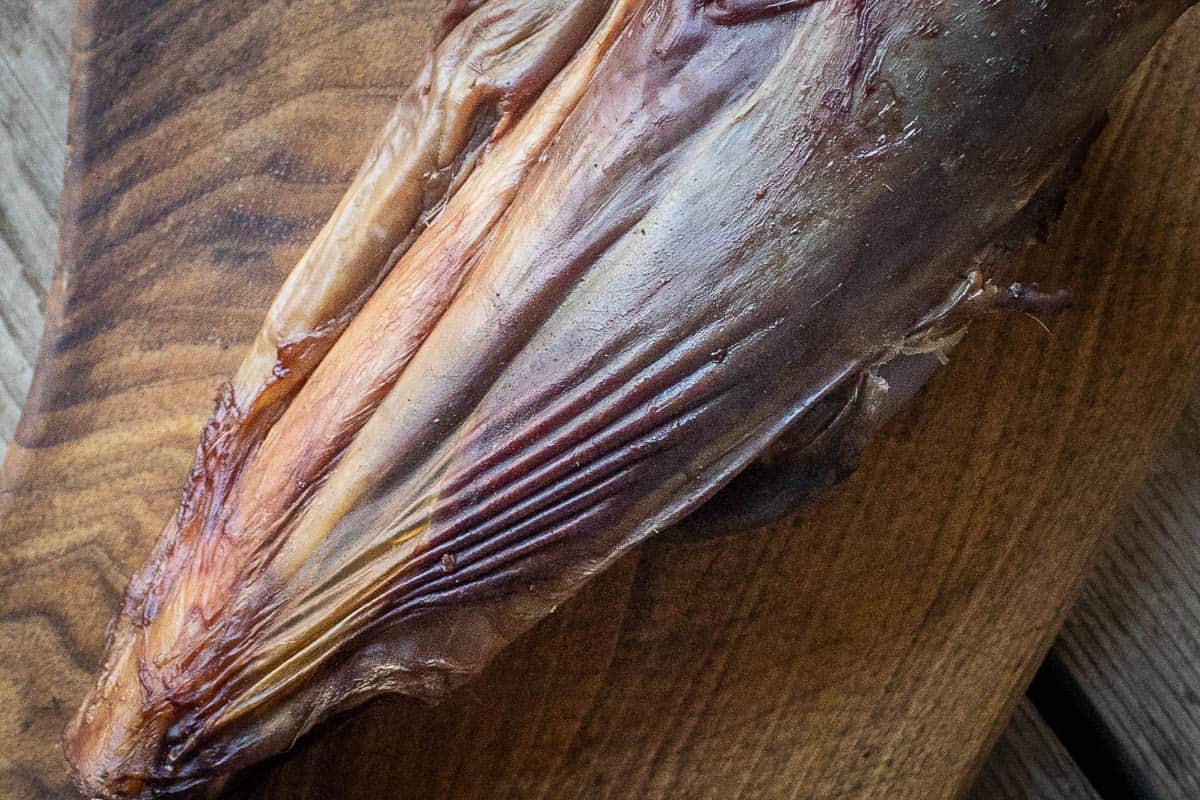
One big question is whether you should remove the fascia, or tissue you can see stretched over the meat on the picture of the shank trimmed with an oscillating saw above, can be tricky. This stuff is chewy, and as it's notoriously difficult to remove while the shanks are fresh, I remove it after cooking when the shanks are soft and pliable.
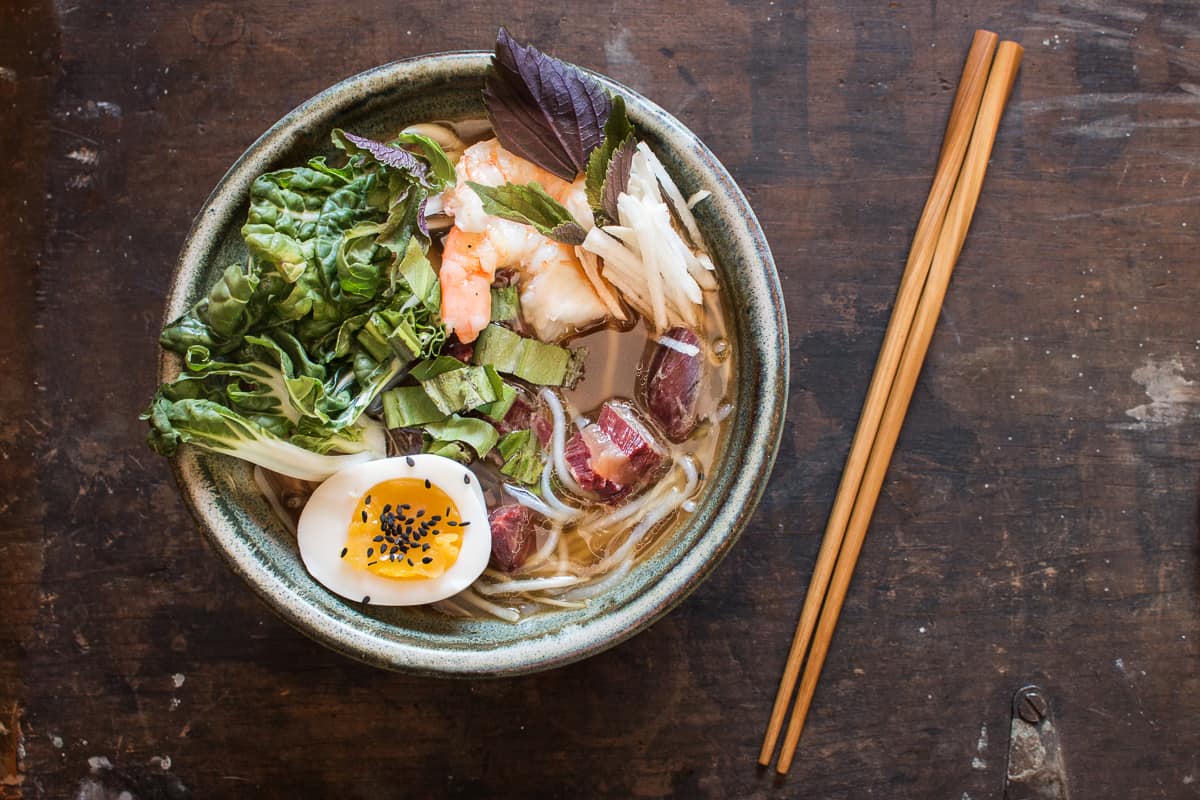
Smoked Venison Shanks
Equipment
- 1 Smoker
- 1 gallon stock pot
Ingredients
- 1-2 venison shanks either hind or foreshanks
For the brine
- 3 quarts water
- 260 grams salt roughly 1 cup + 2 tablespoons
- 1 oz pink curing salt sodium nitrite
- 3 Tablespoons pickling spice
- 2 cups dark brown sugar
- 1 large yellow onion sliced
- 3 dried bay leaves
- 1 bulb garlic halved horizontally
Instructions
- Combine the ingredients for the brine and bring to a simmer in a stock pot. After the mix boils, chill completely, then immerse the venison shanks in the brine and weight it down in a large plastic container.
- If no containers are large enough to hold the ham, a stock pot will work. Keep theshanks in the brine for 3 days, then remove.
- To cook, smoked the shank at 225 Fahrenheit or so for 3 hours, then cool and refrigerate or freeze for later.

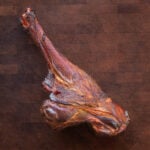
Kyle
Planning on trying this recipe with a 5 pound, bone in, Caribou front quarter. Would the quantities in this recipe suffice or would you recommend doubling/tripling the ingredients?
Alan Bergo
Hey Kyle this is enough liquid to cure that much meat, but it will also depend on how you're storing it. A two gallon zip loc would work. You can also try putting 3 quarts of liquid over the meat in the container you'll keep it in, and use that as your benchmark. If you need 6 quarts to cover it, you'd need to double the recipe. Let me know if that makes sense.
Kyle
Makes sense, thanks for the prompt response!
Alan Bergo
You bet, as long as the meat is totally covered you'll get even distribution of the brine. Also, there's a way to do it without liquid too I use sometimes if I'm short on space for containers filled with liquid. If you want to take a look at that, use my recipe for venison bacon cure, and just rub the meat with it. It will take at least 7 days to cure 5 lbs, and you'll want to rinse it before smoking. You can keep it in a zip loc in the fridge and it's a little easier to manage as there's less liquid.
Jack Ditlove
I'm the hunting group butcher and am always being asked for recipes. Have not tried this type. Love using the smoker and this really looks like a great way.
Thanks!
Alan Bergo
Thanks Jack, I've been using it for years. You can use it for other cuts off the deer (shoulder) too.
Tony
I can’t wait to try this next season. Question, if I don’t have time or resources when hunting could I butcher the deer, freeze the shanks, then thaw and smoke them all prior to refreezing again? I like the idea of doing a large batch to use as required, but hunt out of state for white tail. There’s no way I could do this where I hunt. Thanks!
Alan Bergo
Absolutely you can do that Tony, I do it often. Cured, cooked meat freezes very well.
Jim
Tried this today ( well, I used your recipe as a rating point. I did add more garlic, my powdered Habanero and my Chipotle to the rub), and I had the leg corning for a full week, until I had a chance make this Pastram-bi. Bambi Pastrami.
I WILL make it again!
This was absolutely delicious.
Alan Bergo
Hey Jim, thanks. Glad it worked for you, love the additions, there's all kinds of ways you can play with the brine.
Patrick
What kind of chips you use for the smoker?
Alan Bergo
Hickory, but use your favorite.
Scott Poborsky
What do you base your quantity of pink curing salt on? I'm giving this a shot but with a couple deer roasts instead of shanks. Do I need to adjust the curing salt? I haven't used pink curing salt before and don't want to over do it.
Also, do you have a conversion from pink curing salt to Mortons tender quick?
Thank you.
Alan Bergo
It's based on tried and true recipes I used to serve to the public at my restaurants. Many of us used to use Charcuterie by Michael Rhulman as a guide for pink salt in cures, but I usually decrease the amount a bit. This should be a pared down version of the cure I use to make ham. Most of it gets dissolved in water, and thats a good way to consume less of it, if you're worried about that. It's a good, all purpose brine cure.
Scott Poborsky
Thank you for the quick response. Got another question for you. What if I leave the curing salt out completely? The hams I'm making will be consumed the day I smoke them.
Alan Bergo
You sure can, but, remember that curing salt is part of the reason ham, jerky, and any meat that's pink after it's cooked tastes as good as it does. FWIW, celery salt and other "substitutes" are the exact same compounds, they just occur naturally. I had a line cook who used to make brisket with celery juice. If you do omit the pinky, don't expect to have the same sort of wow factor, but it will still be ok.
Scott Poborsky
Ok. Thank you for the assistance and advice. I'll comment on here on how it went.
Scott Poborsky
The hams turned out fantastic and had a great flavor. Everyone enjoyed them, including a couple people who don't care for venison. I smoked them to an internal temp of 180 using hickory. I will be using this again.
Alan Bergo
Great. The brine trick for game will serve you well.
Ole Valderhaug
This looks great! Got a couple of shanks in the freezer that ill be trying this weekend, what internal temperature would you be aiming for during the smoking?
Alan Bergo
Not internal temperature, you're cooking the shanks until the meat moves freely and they're tender. But, these aren't something that I'll just eat right off the bone, I prefer to smoke the shanks and simmer in liquid to help make sure nothing dries out, afterwords, remove the shanks, pick the meat (or chill and dice it) then reheat and eat.